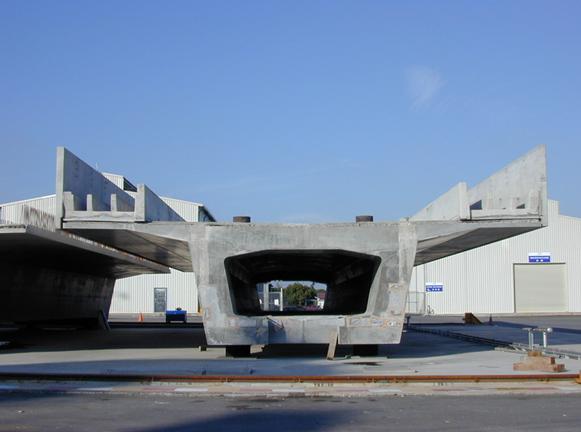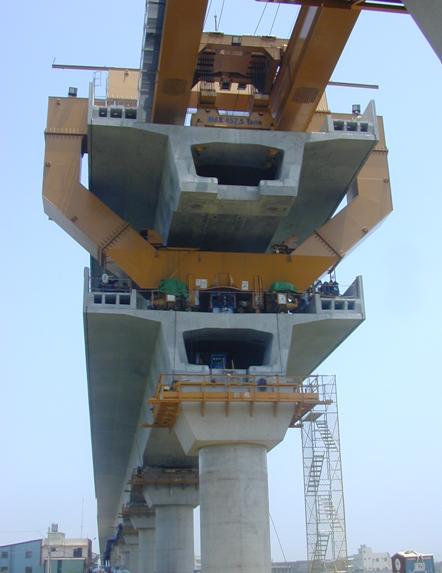A box girder highway bridge


Figure 5.14: A closed box section for a highway bridge (Courtesy of Mr B Duguid, Mott MacDonald)
Figure 5.14 shows the so-called box girder bridge in which the main beams are girders with the shape of a hollow box. The box girder shown in Figure 5.14 is trapezoidal in cross-section but rectangular shapes of girders are also common.
One of the main advantages of box girders over I section beams is that they provide much improved resistance to torsion than I sectioned beams. As shown in Model 5 in the Model Demonstration section of the chapter, an enclosed section has much higher torsional rigidity than an open section with the same shape and area. As a bridge is often subjected to non-symmetric loads, such as traffic on one side of the bridge, this leads to both bending and torsion actions on the bridge deck. Torsion effects are also more significant when a bridge curves in plan. In addition, the presence of two webs allows wider and hence stronger flanges to be used, allowing longer spans.
